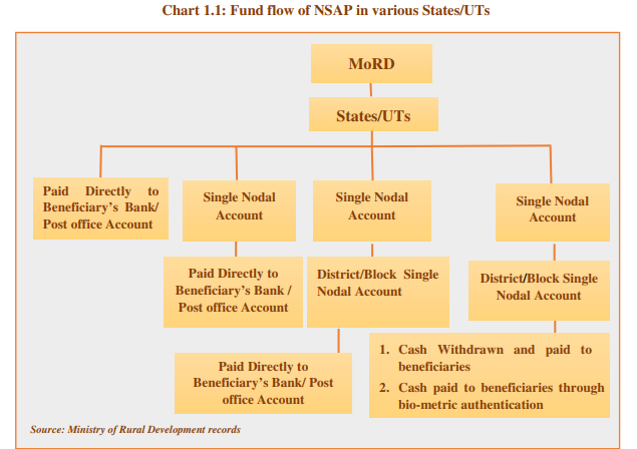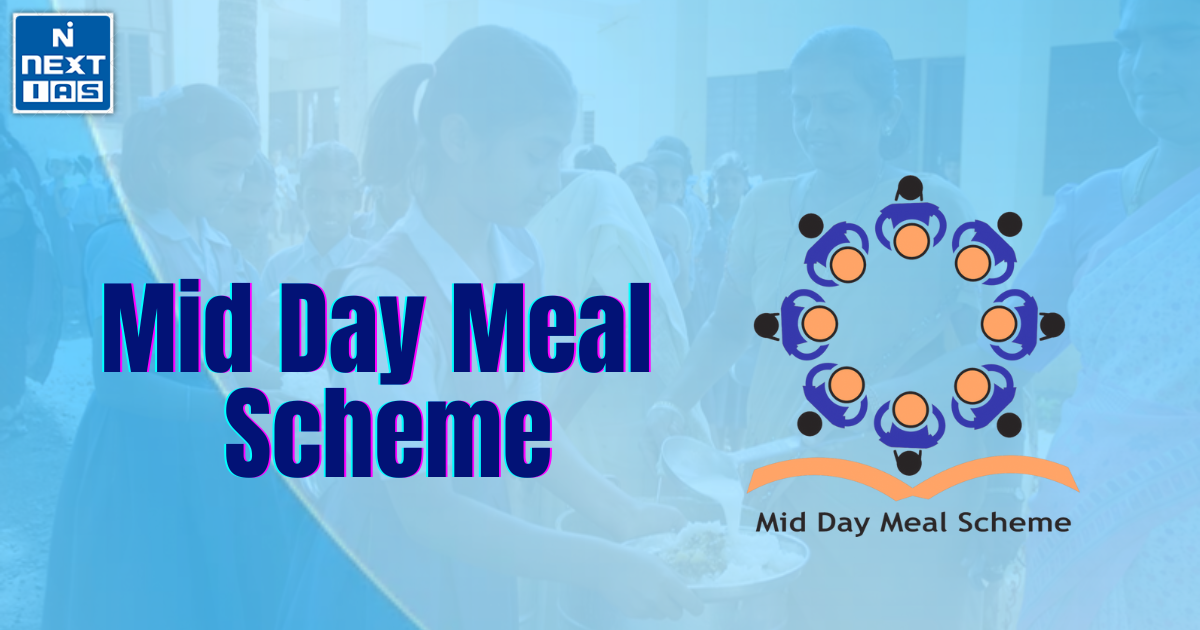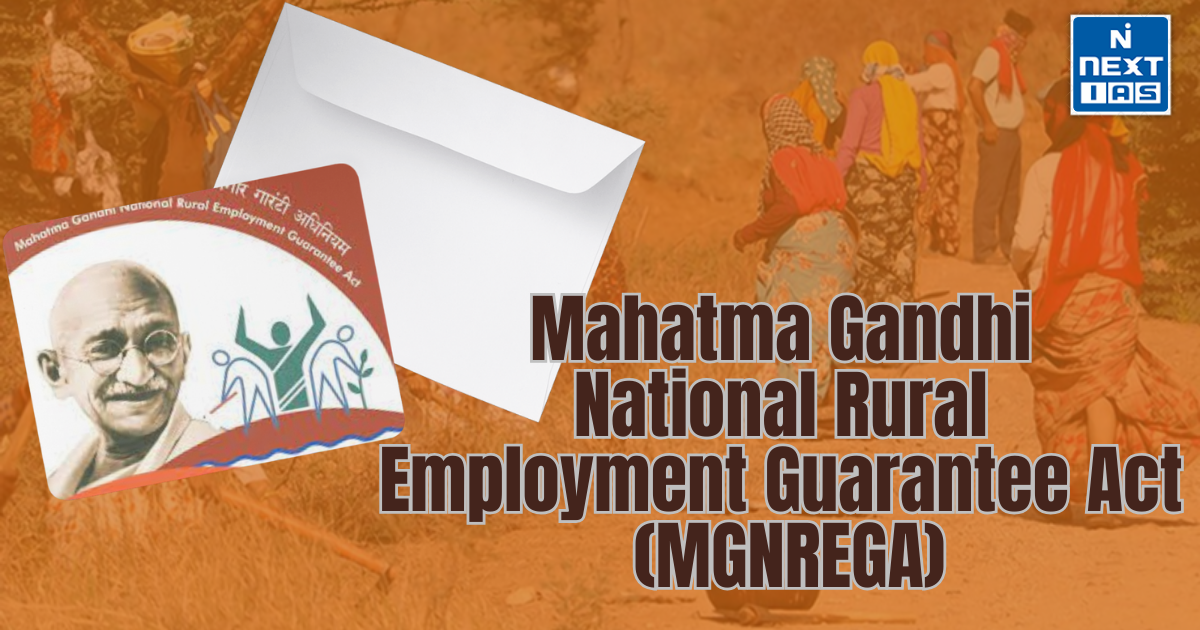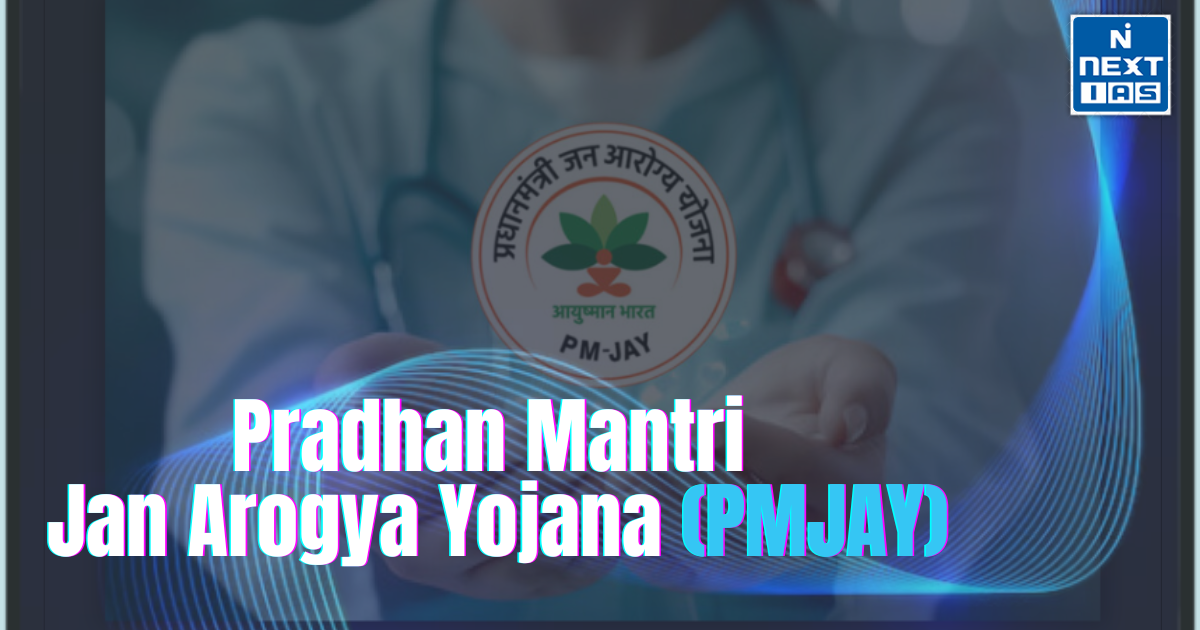
The National Social Assistance Programme (NSAP) is a welfare programme being administered by the Ministry of Rural Development. This programme is being implemented in rural areas as well as urban areas. NSAP represents a significant step towards the fulfilment of the Directive Principles of State Policy enshrined in the Constitution of India which enjoin upon the State to undertake within its means a number of welfare measures.
About the National Social Assistance Programme (NSAP)
- These are intended to secure for the citizens adequate means of livelihood, raise the standard of living, improve public health, provide free and compulsory education for children etc.
- In particular, Article 41 of the Constitution of India directs the State to provide public assistance to its citizens in case of unemployment, old age, sickness and disablement and in other cases of undeserved want within the limit of its economic capacity and development.
- It is in accordance with these noble principles that the Government of India on 15th August 1995 included the National Social Assistance Programme in the Central Budget for 1995-96.
- The Prime Minister in his broadcast to the Nation on 28th July 1995 announced that the programme will come into effect from 15th August 1995. Accordingly the Government of India launched NSAP as a Centrally Sponsored Scheme w.e.f 15th August 1995 towards fulfilment of these principles.
- The National Social Assistance Programme (NSAP) then comprised of National Old Age Pension Scheme (NOAPS), National Family Benefit Scheme (NFBS) and National Maternity Benefit Scheme (NMBS).
- These programmes were meant for providing social assistance benefit to the aged, the BPL households in the case of death of the primary breadwinner and for maternity.
- These programmes were aimed to ensure minimum national standards in addition to the benefits that the States were then providing or would provide in future.
Features of the National Social Assistance Programme (NSAP)
- Targeted Social Security: NSAP benefits are specifically meant for BPL individuals, ensuring assistance reaches the most vulnerable sections of society.
- Central Assistance with State Implementation: The program is centrally funded but implemented by state governments, allowing flexibility in execution while maintaining national standards.
- Multiple Schemes Under NSAP:
- Indira Gandhi National Old Age Pension Scheme (IGNOAPS): Provides monthly pensions to elderly individuals aged 60 years and above.
- Indira Gandhi National Widow Pension Scheme (IGNWPS): Supports widows aged 40 years and above with financial aid.
- Indira Gandhi National Disability Pension Scheme (IGNDPS): Offers assistance to persons with severe disabilities aged 18 years and above.
- National Family Benefit Scheme (NFBS): Provides a one-time financial grant to families upon the death of a primary breadwinner.
- Annapurna Scheme: Offers free food grains to senior citizens who are not covered under IGNOAPS.
- Direct Benefit Transfer (DBT): Pensions and assistance are directly transferred to beneficiaries’ bank accounts to ensure transparency and reduce leakages.
- Enhancing Social Inclusion: By supporting marginalized communities, NSAP plays a crucial role in poverty alleviation and promoting social welfare.

Components of the National Social Assistance Programme (NSAP)
- Indira Gandhi National Old Age Pension Scheme (IGNOAPS)
- Provides a monthly pension to senior citizens aged 60 years and above.
- Beneficiaries aged 60-79 years receive ₹200 per month, while those 80 years and above receive ₹500 per month.
- Indira Gandhi National Widow Pension Scheme (IGNWPS)
- Offers financial support to widowed women aged 40 years and above.
- Provides a monthly pension of ₹300 for widows aged 40-79 years.
- Increases to ₹500 per month for widows aged 80 years and above.
- Indira Gandhi National Disability Pension Scheme (IGNDPS)
- Supports individuals aged 18 years and above with 80% or more disability.
- Provides a monthly pension of ₹300, which increases to ₹500 for those aged 80 years and above.
- National Family Benefit Scheme (NFBS)
- Provides a one-time financial assistance of ₹20,000 to BPL families upon the death of the primary breadwinner (aged 18-59 years).
- Annapurna Scheme
- Provides 10 kg of free food grains per month to elderly individuals who are eligible for IGNOAPS but are not receiving a pension.
Significance of the National Social Assistance Programme (NSAP)
- Financial Security for the Vulnerable
- NSAP ensures a basic level of income for elderly individuals, widows, and persons with disabilities, helping them meet their essential needs.
- It acts as a social safety net for families who lose their primary breadwinner.
- Poverty Alleviation
- By providing financial aid to marginalized groups, NSAP reduces economic distress and helps in improving living conditions.
- The Annapurna Scheme ensures food security for senior citizens without pensions.
- Empowerment of Women and Disabled Persons
- The Indira Gandhi National Widow Pension Scheme (IGNWPS) helps widows achieve financial independence.
- The Indira Gandhi National Disability Pension Scheme (IGNDPS) provides economic support to persons with disabilities, promoting social inclusion.
- Support to Rural and Economically Weaker Sections
- Most beneficiaries of NSAP reside in rural areas, where financial assistance plays a key role in reducing socio-economic disparities.
- Transparent and Efficient Implementation
- With Direct Benefit Transfer (DBT), funds are directly transferred to beneficiaries’ bank accounts, eliminating middlemen and reducing corruption.
- Alignment with Welfare Goals
- NSAP aligns with India’s commitment to social justice and welfare, supporting the vision of inclusive growth and poverty reduction.
Lacunae of the National Social Assistance Programme (NSAP)
- Inadequate Financial Assistance
- The pension amounts under IGNOAPS, IGNWPS, and IGNDPS (₹200-₹500 per month) are insufficient to meet even basic needs such as food, healthcare, and shelter.
- Inflation and rising living costs further reduce the real value of assistance.
- Limited Coverage
- The programme is restricted to Below Poverty Line (BPL) households, excluding many needy individuals who do not fall under the official BPL category but still face economic hardship.
- Many elderly individuals, widows, and disabled persons remain uncovered due to flawed identification mechanisms.
- State Disparities in Implementation
- Since states have the discretion to supplement central assistance, there are variations in pension amounts and beneficiary coverage, leading to regional inequalities.
- Some states provide additional financial aid, while others fail to allocate sufficient resources.
- Issues with Direct Benefit Transfer (DBT)
- While DBT aims to ensure transparency, many beneficiaries face difficulties in accessing banks, especially in remote rural areas.
- Aadhaar-related linking issues, inactive bank accounts, and lack of digital literacy delay payments.
- Lack of Regular Updates and Enhancements
- The pension amounts under NSAP have not been revised adequately over the years to account for inflation.
- There is no provision for periodic evaluation and restructuring to improve effectiveness.
- Bureaucratic and Administrative Delays
- Lengthy verification and approval processes often lead to delays in disbursement.
- Corruption and red tape in local governance further obstruct timely identification and delivery of benefits.
- Exclusion from Broader Social Security Measures
- NSAP only provides financial assistance but lacks provisions for healthcare, skill development, and employment opportunities for beneficiaries.
- A holistic approach to social security is missing.
Key Pointers on National Social Assistance Programme (NSAP) for UPSC CSE Prelims
- Launch Year: 1995
- Ministry: Ministry of Rural Development (MoRD)
- Objective: Provides social security to Below Poverty Line (BPL) households, especially the elderly, widows, and disabled persons.
- Type of Scheme: Centrally Sponsored Scheme (CSS) with 100% central assistance.
- Direct Benefit Transfer (DBT): Benefits are transferred directly to beneficiaries’ bank accounts.
- Components of NSAP:
- Indira Gandhi National Old Age Pension Scheme (IGNOAPS) – ₹200/month (60-79 years), ₹500/month (80+ years).
- Indira Gandhi National Widow Pension Scheme (IGNWPS) – ₹300/month (40-79 years), ₹500/month (80+ years).
- Indira Gandhi National Disability Pension Scheme (IGNDPS) – ₹300/month (18-79 years), ₹500/month (80+ years).
- National Family Benefit Scheme (NFBS) – One-time ₹20,000 to BPL families upon the death of a primary breadwinner (18-59 years).
- Annapurna Scheme – 10 kg of free food grains per month for eligible senior citizens not receiving a pension.
- Eligibility: Only Below Poverty Line (BPL) households are eligible.
- Implementation: Managed by State/UT governments under central guidelines.
- Significance: Ensures financial security, poverty alleviation, and social inclusion for the disadvantaged sections of society.
- Related Goals: Aligns with Directive Principles of State Policy (DPSP) – Article 41 (Right to Work, Education & Public Assistance).
Way Forward
The way forward for NSAP includes increasing pension amounts, expanding coverage to more vulnerable groups, ensuring timely fund disbursement, strengthening Direct Benefit Transfer (DBT) mechanisms, and integrating social welfare schemes. Enhancing awareness and leveraging technology for better monitoring will further improve its impact on poverty alleviation and social security.
Conclusion
The National Social Assistance Programme (NSAP) plays a crucial role in providing financial and social security to the elderly, widows, and disabled individuals from economically weaker sections. By ensuring direct benefit transfers and inclusive welfare, NSAP enhances social equity, reduces poverty, and strengthens India’s commitment to social justice and economic empowerment.





